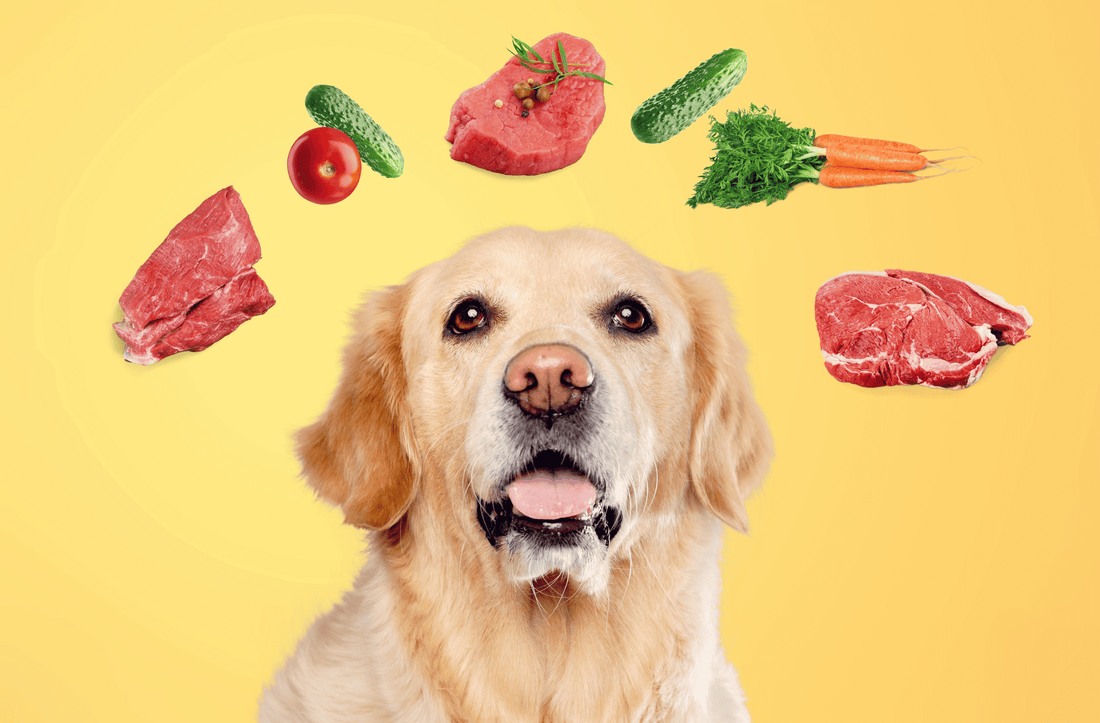Hey pet pals! We hope you enjoyed Part 2 of our What’s on Your Dog’s Plate Blog Series focused on Raw Feeding : The Pros and Cons?
Ready for the truth about raw feeding? In this 3rd instalment of our doggy diet series, we're busting the myths and setting the record straight on raw feeding. Let's separate fact from fiction and get to the heart of what raw feeding is all about.
Myth #1: Raw Diets are Unbalanced and Lack Nutrients
Reality:
Raw feeding, when done right, can provide a well-balanced and nutrient-rich diet for your pup. The key is variety. By incorporating a mix of meats, bones, organs, and supplements (where required), you can meet your dog’s nutritional needs. It’s all about balance, just like with any diet.
And if you’re lacking in confidence, there's no shortage of fantastic companies offering "complete" options, ensuring your dog's basic nutritional needs are met. These complete meals are meticulously formulated to provide a comprehensive blend of proteins, vitamins, and minerals, offering a convenient and reliable option for pup parents who are new to raw feeding or prefer the simplicity of pre-made meals. So rest assured, there are plenty of options available to kickstart your pup's raw feeding journey with confidence.
Myth #2: Raw Diets Pose a Bacterial Threat to Dogs and Humans
Reality:
While it's true that raw meat can carry bacteria like Salmonella or E. coli (as can kibble or any meat product), dogs' digestive systems are better equipped to handle these bugs than ours. Proper handling, storage, and hygiene practices significantly reduce the risk of bacterial transmission to both dogs and humans, much the same as would apply when storing and handling raw meat for your own consumption.
Myth #3: Raw Bones are Dangerous and Prone to Splintering
Reality:
Contrary to popular belief, raw bones are generally safe for dogs when chosen appropriately. The key is selecting the right type and size of bone to minimize the risk of splintering or choking hazards. Certain bones are dangerous, such as cooked bones, sawn leg bones and whole leg bones from meat animals. Cooked bones, and weight-bearing bones, are species inappropriate and should never be fed to dogs. Heat causes bones to harden, dry out and become brittle, hence the splintering. But raw bones are relatively soft and moist, so have a good degree of flexibility.
It is important to note that you should never leave your pup unsupervised when chewing ANYTHING, so always keep an eye on the little ones and discard any small or sharp bone fragments to prevent accidental ingestion. By selecting suitable bones and closely monitoring your pup's chewing habits, you can safely incorporate raw bones into their diet to promote dental health and satisfy their natural instinct to chew.
Myth #4: Raw Diets Cause Digestive Upset in Dogs
Reality:
Yes, some dogs may experience a transition period when switching to raw food, leading to mild digestive upset. This is normal as their digestive systems adapt. Gradual introduction and monitoring can help ease the transition, and many dogs thrive on raw diets in the long run.
Myth #5: Raw Feeding Is Expensive and Time-Consuming
Reality:
While raw feeding can be perceived as more expensive, it doesn't have to break the bank. Strategic sourcing, buying in bulk, and planning can help manage costs. As for time, with proper planning and meal prep, raw feeding can be as convenient as any other diet.
Myth #6: Dogs on Raw Diets Will Lack Fibre
Reality:
Raw diets can include plant-based ingredients to provide fibre, although dogs have a lower requirement for fibre compared to humans. Incorporating vegetables, fruits, or supplements can contribute to a balanced diet that meets all your pup's nutritional needs.
Myth #7: Raw Diets Lead to Increased Aggression in Dogs
Reality:
There's no scientific evidence linking raw feeding to increased aggression in dogs. A dog's behaviour is influenced by various factors, including genetics, training, and socialisation. Raw feeding, when done appropriately, should not be a factor in aggression.
Myth #8: Commercial Pet Foods Are Always Safe and Nutritious
Reality:
Commercial pet foods can vary widely in quality, and not all of them are created equal. Some may contain fillers, artificial additives, and low-quality ingredients. It's essential to scrutinise labels and choose reputable brands, whether feeding raw or commercial diets.
Finding the Right Path = A Tailored Approach
In conclusion, raw feeding isn't a one-size-fits-all solution, but many of the myths surrounding it are unfounded. Working closely with your vet, staying informed, and adjusting your approach based on your pup's individual needs will help you navigate the world of raw feeding successfully.
Stay tuned for our next instalment, where we'll delve into the fascinating world of freeze dried dog food, exploring what exactly it is and its pros and cons to continue to help you navigate the diverse landscape of dog nutrition with confidence.


